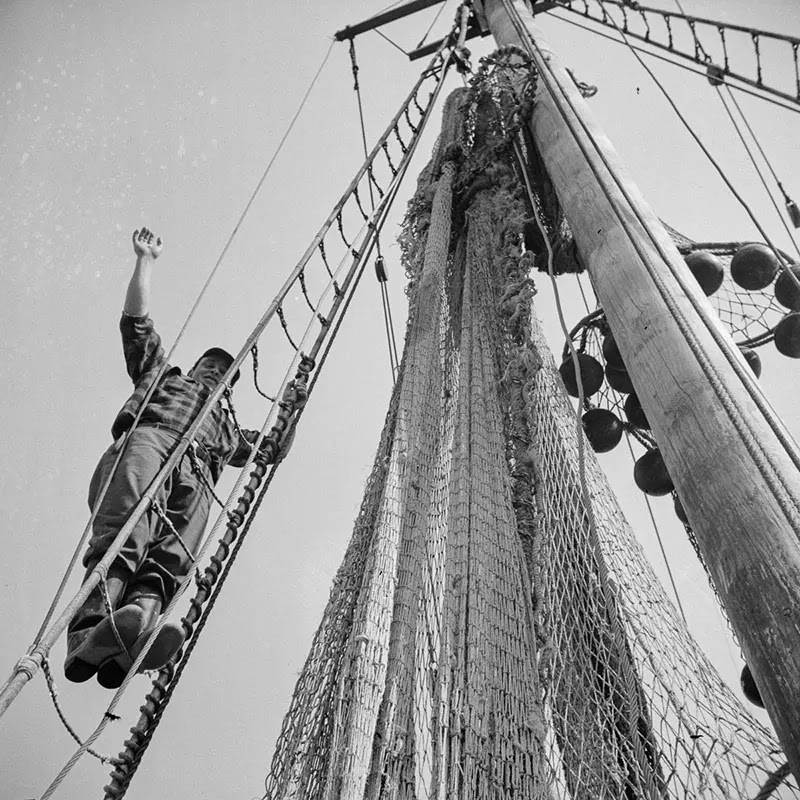A day from the original Fulton Fish Market in Manhattan, 1943

These photos, taken by photographer Gordon Parks, capture the Fulton Fish Market in lower Manhattan and document the path of a new catch from New England fishermen's boats to vendors' stands.
The Fish Market was originally a wing of Fulton Market, which was established in 1822 to sell a variety of foods and produce.
In November 2005, Fish Market moved to a new facility in Hunts Point in the Bronx, from its historic location near the Brooklyn Bridge to the East River waterfront and above Fulton Street in the Financial District, Lower Manhattan.
During its 183-year tenure at the original site, Fulton Fish Market was the most important wholesale East Coast fish market in the United States.

Fulton Fish Market was one of New York's earliest open-air fish markets. From the New York newspaper of 1831: In New York, there are many markets. Those called Fulton and Washington Markets are the largest. Fulton Market is at the eastern end of Fulton Street near the East River... The first was formerly located in Maiden Lane along the East River, and was called Flea Market.
Fulton Fish Market initially primarily served housekeepers from the surrounding areas and Brooklyn. However, by 1850, wholesalers had become the main buyers as the market came to prominence.
Fulton Fish Market is one of the oldest fish markets in the United States, in competition with the smaller Maine Avenue Fish Market in Washington, D.C., claiming Fulton Market to be the oldest in continuous operation at one place (since 1822). was transferred in 2005.

Fulton Fish is of interest to market economists as a case study in imperfect competition, despite being a highly centralized market with a large number of well-informed buyers and sellers.
Using data from 1992, Grady found that third-degree price discrimination arose in the Fulton market. Specifically, Asian customers, who were generally more price elastic, were cited for lower prices than white buyers, averaging 6.3 cents. Grady attributes this to the various markets offered by Asian and white buyers.
Asian buyers were more likely to resell fish in retail and fry shops in poorer areas or establishments in Chinatowns where the restaurant sector was highly competitive.
Therefore, they had less scope to pass on prices to their customers than white buyers, who were more likely to resell to less elastic customers.




No comments: